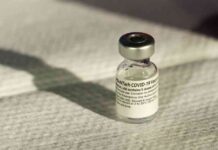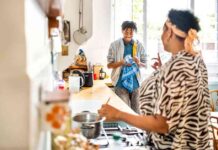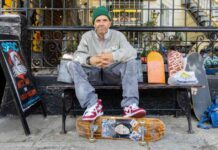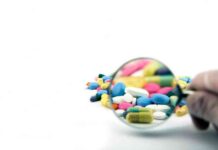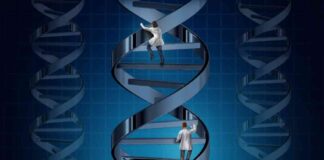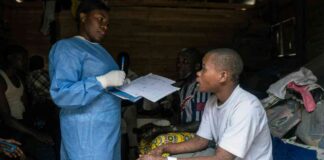I’m recovering from the STAT Summit — in particular, recovering from this stunning view of Boston from the venue. On Wednesday evening, we had an amazing view of the almost-supermoon rising as dusk settled in during the last panel of the day.
But the best view? All of your faces. It was so good to see some readers in person — and if not this time, the next one!
Atul Gawande and biased algorithms
We’re still digesting everything that happened at the STAT summit. Some tidbits for your consideration:
• STAT’s Sarah Owermohle quoted one of her favorite lines from Atul Gawande’s book ‘Being Mortal’ in her session with him: “‘Our ultimate goal, after all, is not a good death, but a good life to the very end,’” she said. Gawande expanded on that, saying that as life expectancies from around the globe have gotten longer, it’s important to understand people’s priorities. “Whether it’s wearing a mask or taking cancer chemotherapy, the questions are the same,” he told the audience. “What are you willing to sacrifice? What are you not willing to sacrifice for the sake of more time?”
• We were privileged to have three doctors at the Summit who have spoken out about the moral injury of UnitedHealth Group’s Optum taking over their primary care practices. They’ve been quoted in our ongoing Health Care’s Colossus series.
• Usha Lee McFarling and Katie Palmer’s Embedded Bias series showed how hard it is to disentangle race from algorithms used to determine patient care. But it’s another thing to hear from a patient who waited an extra four years to get a kidney transplant because of the race factor in one of those equations.
The doctor exploring music’s effect on cognition
Earlier this week, we introduced you to our 2024 STAT Wunderkinds, highlighting some of the brightest young minds in health care and life sciences. We also got to hear about their stunning accomplishments and inspiring perspectives at the STAT Summit.
Today we bring you a Wunderkind profile: Alex Chern’s mother started him on violin lessons as a child after he was diagnosed with hearing loss. Later, in med school, while sitting in the Vanderbilt cafeteria, he was surprised to read that a neuroscientist who also had a vocal arts degree was starting a music cognition lab at Vanderbilt.
Now, he looks back on that day in the cafeteria as the start of the year everything came together. Chern’s journey involves a 10-day coma and his research on the ties between music, hearing loss, and cognitive decline.
Exposing the exposome
You may be familiar with what a genome is, or a microbiome, but do you know what an exposome is? Just as your genome is all of the genes that make up you, the exposome is all of the chemicals you’ve uniquely been exposed to given your diet, the medicines you take, the products you use, and the quality of your water and air, etc.
(And let me, your friendly neighborhood chemist, remind you that literally everything is made up of chemicals — you’re exposed to hundreds of them every day.)
Researchers studying blood taken from pregnant women recently developed a way to screen for many more of these chemicals than was previously possible — identifying nearly 300 of them at the same time. In combination with an assay that measured whether neurons were stunted in their growth, the researchers were able to determine both that many of the mixtures of chemicals were bad for neural development, and that even if individual chemicals were found at low levels, the additive effect of them in a mixture was still bad. The research will help identify mixtures of chemicals we should screen for in the future.
Summit highlights, from Medicare to crosswords
• Being in the room for a STAT summit is an entirely different experience than seeing it virtually. Cerevel Therapeutics chairman Tony Coles told the room about his work with the Black Economic Alliance: “This is a very high-profile elected official who said, ‘Tony, I would really want to support the organization, but it has ‘Black’ in it. And as a result of that, I can’t be seen as supporting anything that has the word ‘Black’ in it.’ That’s a direct quote.”
• Former CMS administrator Don Berwick had a spicy talk with Bob Herman about the future of Medicare. Here’s one of his takes on the “medical loss ratio” and how people from other countries are incredulous when they hear about how we do health insurance in this country.
Another Don quote that we at STAT loved was this one: “I have to say that’s STAT’s been a real treasure nationally, one of the journalist organizations that’s able to actually help people understand what’s nearly not understandable.”
• We don’t have a STAT Summit bingo card, but the fact that it took until the second day for GLP-1s to be mentioned made me think we should! We did, however, have a fun STAT newspaper. It was a print-only special, but you can find the crossword here if you like!
Asian Americans in health care aren’t a monolith
After traveling to both Tokyo and Hong Kong on the same trip last year, I was struck by how shockingly different these two cultures were, even though they’re both East Asian countries. But in the U.S., people from both backgrounds would be categorized under the generic label of “Asian American.”
A new study in JAMA Network Open breaks down the Asian American category into 40 ethnoracial subgroups to investigate who is doing what jobs in U.S. healthcare. The results show that the overarching category hides inequities among different populations that the authors say go back to historical imperialism, colorism, and other injustices that have resulted in socioeconomic disparities.
While Indian and Chinese Americans comprise the largest proportion of Asian-American physicians, Cambodian and Hmong Americans are largely underrepresented. Filipinx Americans make up more than half of Asian American nurses and nursing assistants, and Bangladeshi and Chinese Americans made up the largest proportions of home health aides. Overall, Asian Americans represented an estimated 22% of physicians, 10% of RNs, and 8.3% of home health aides.



